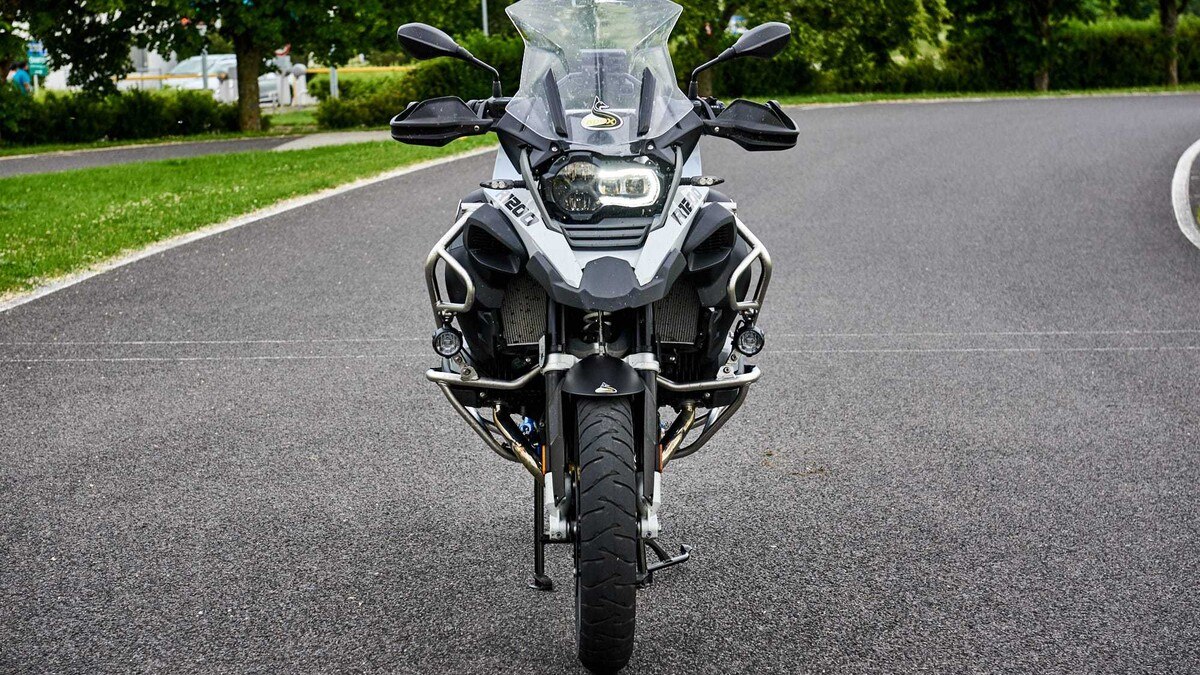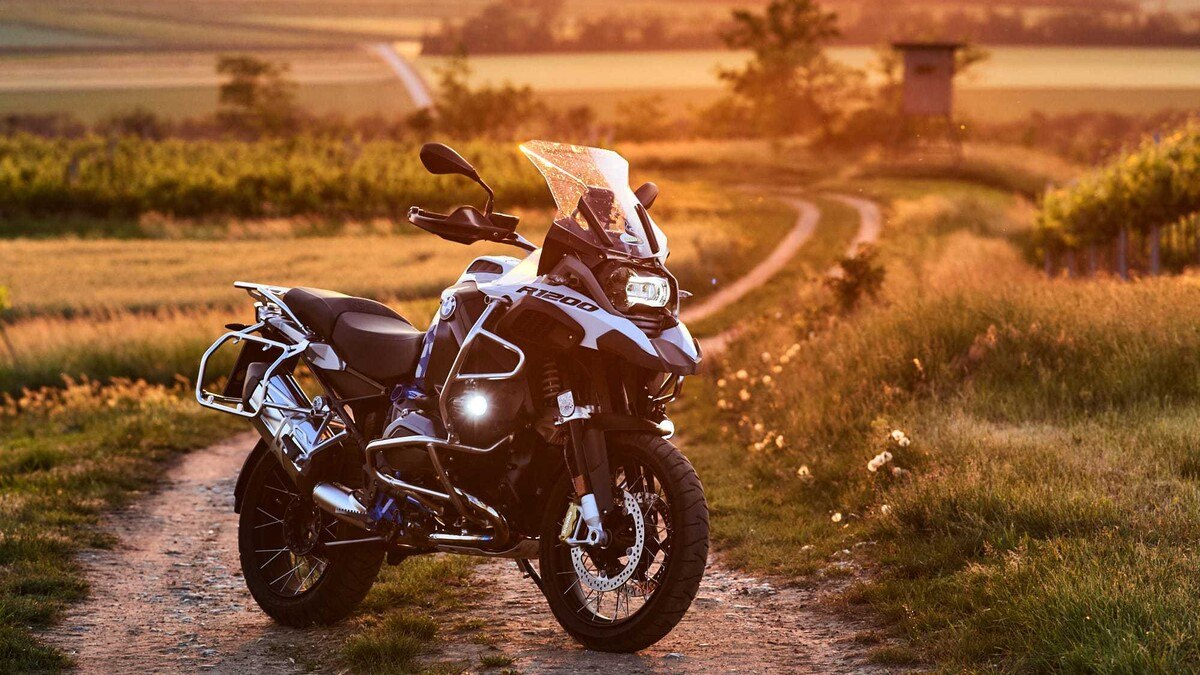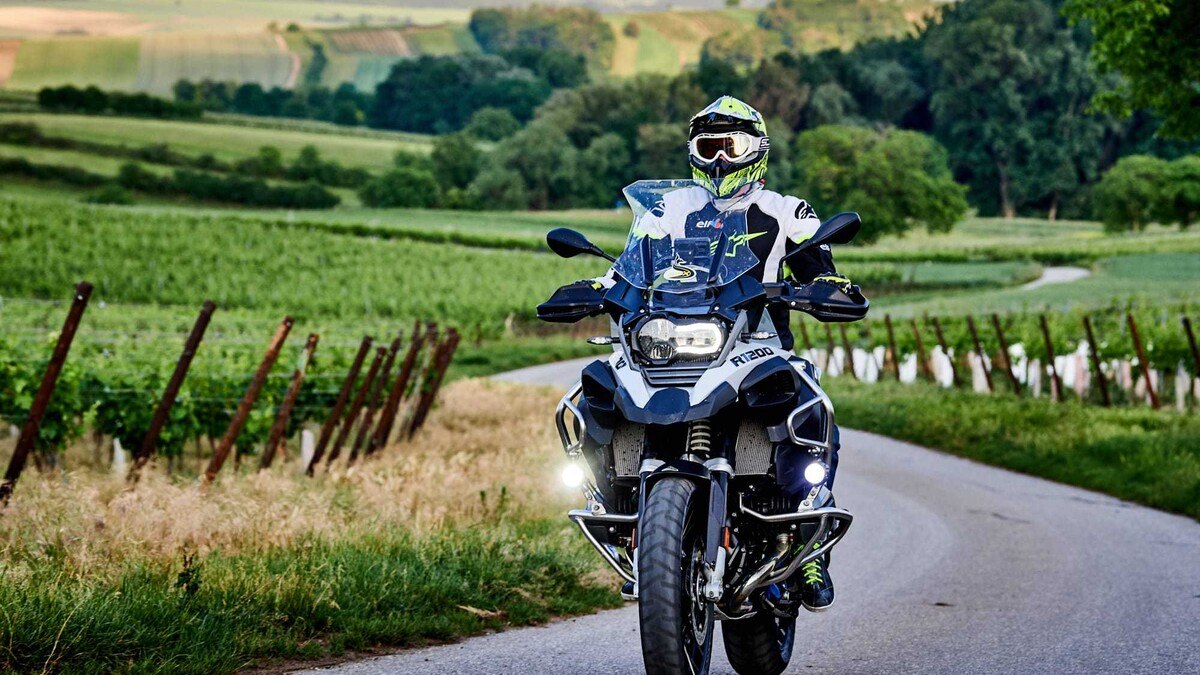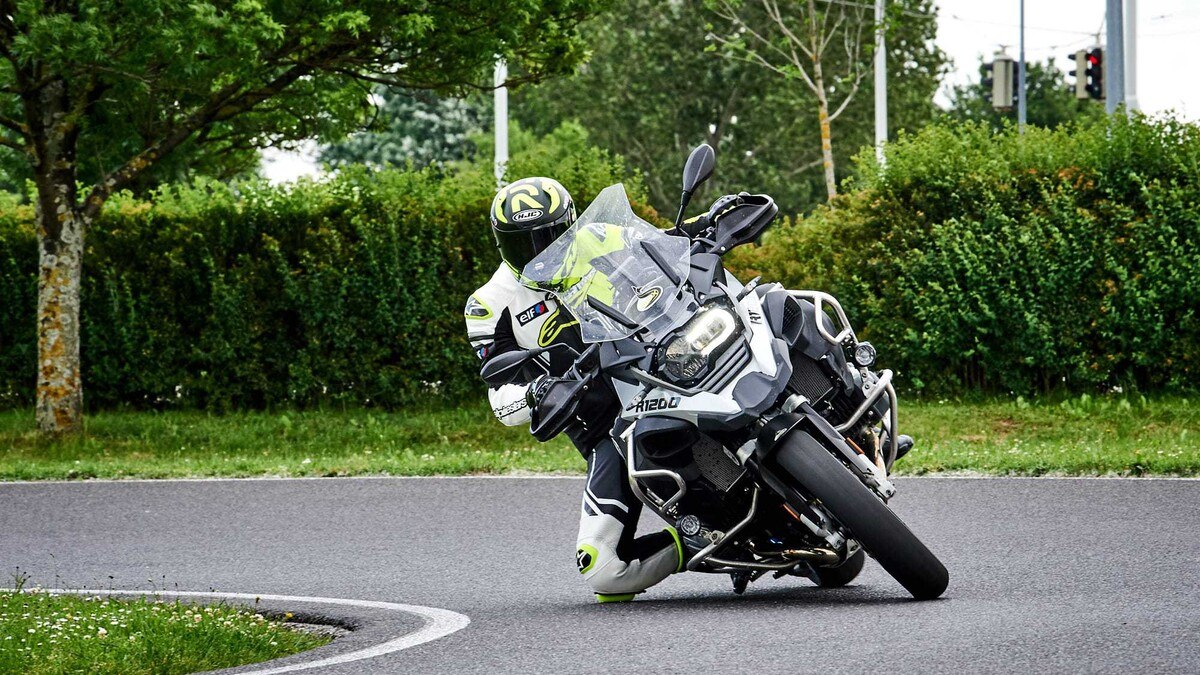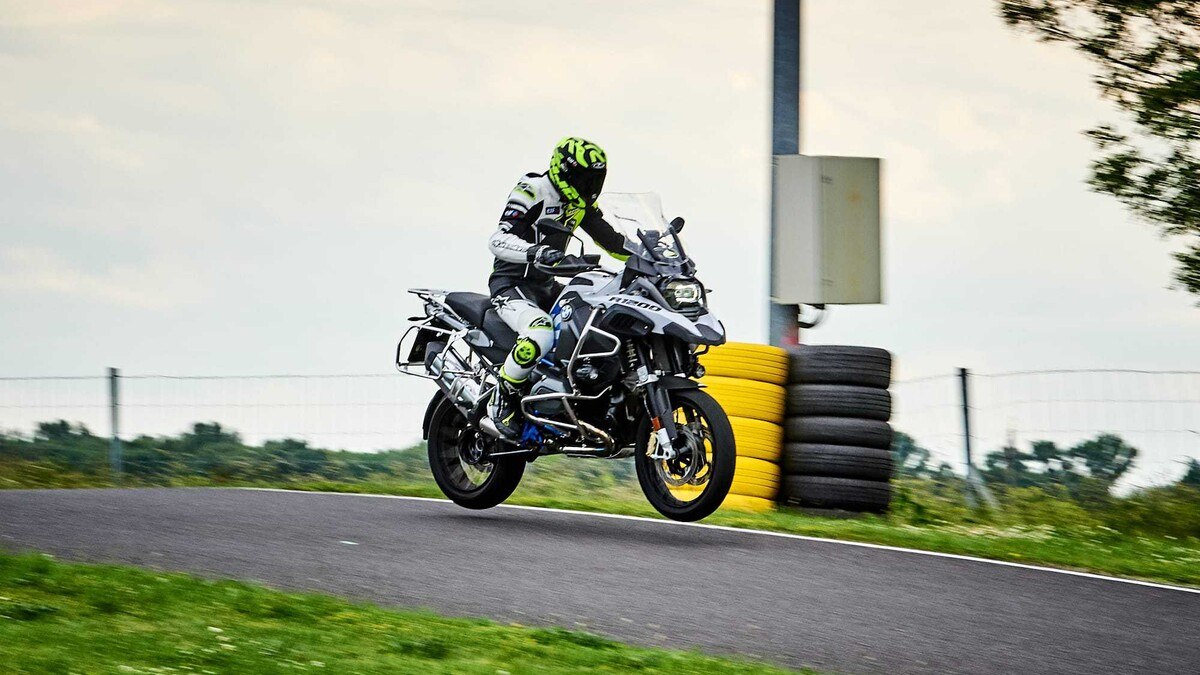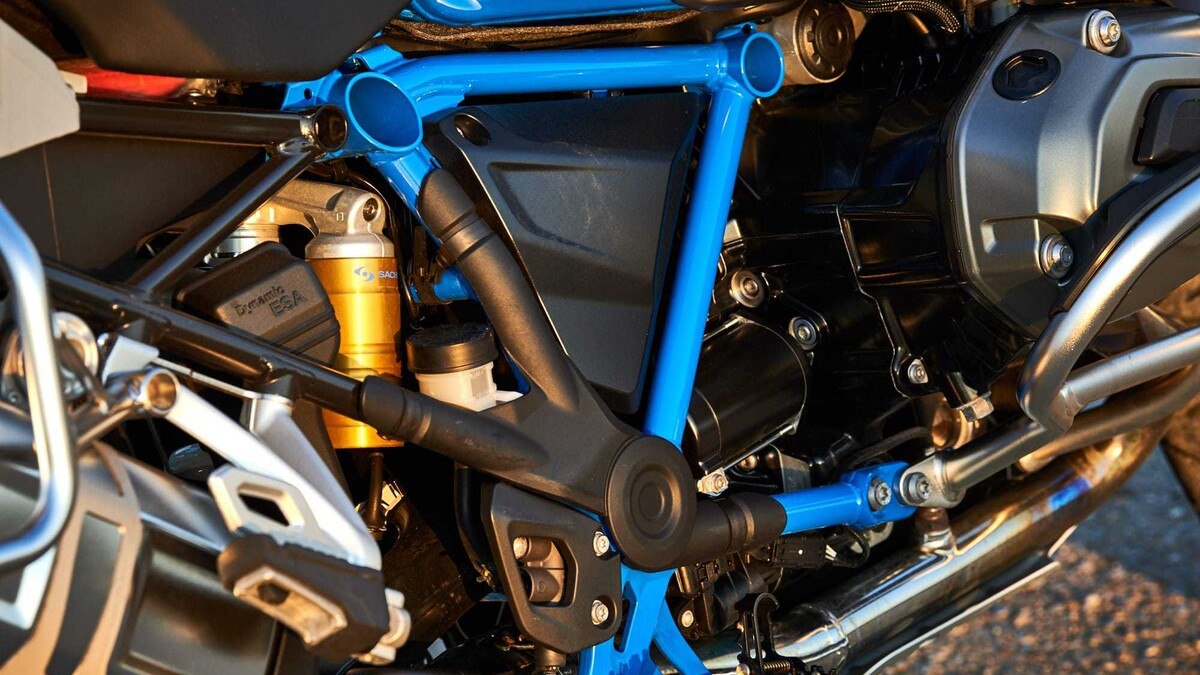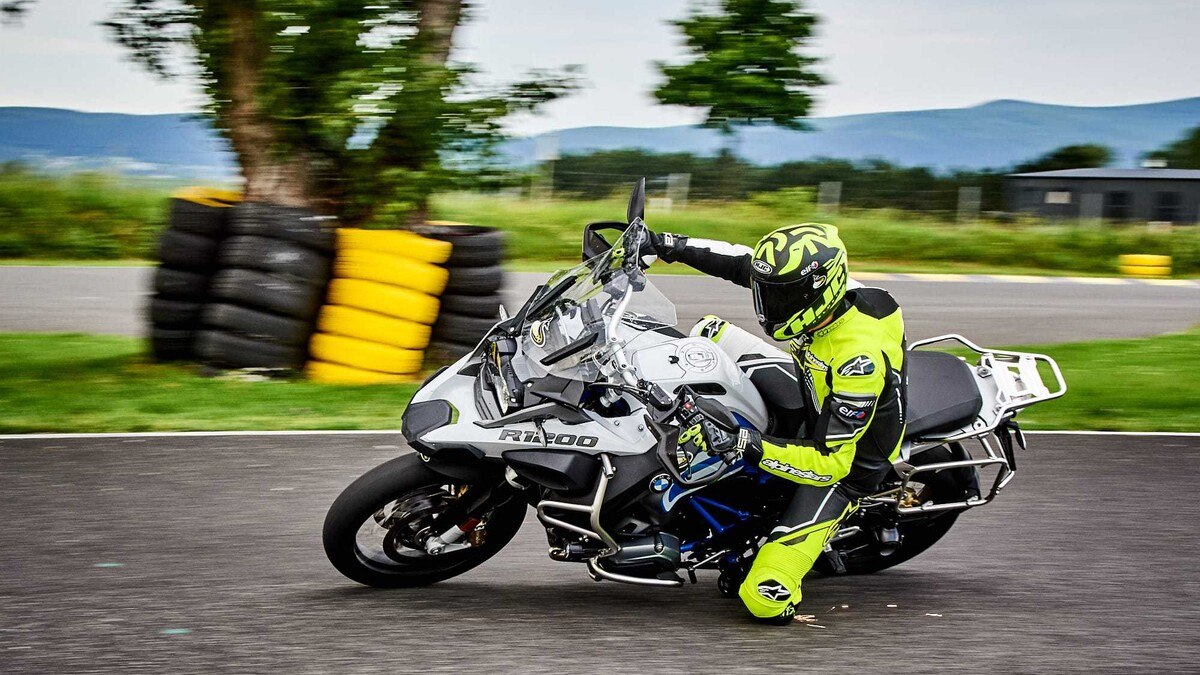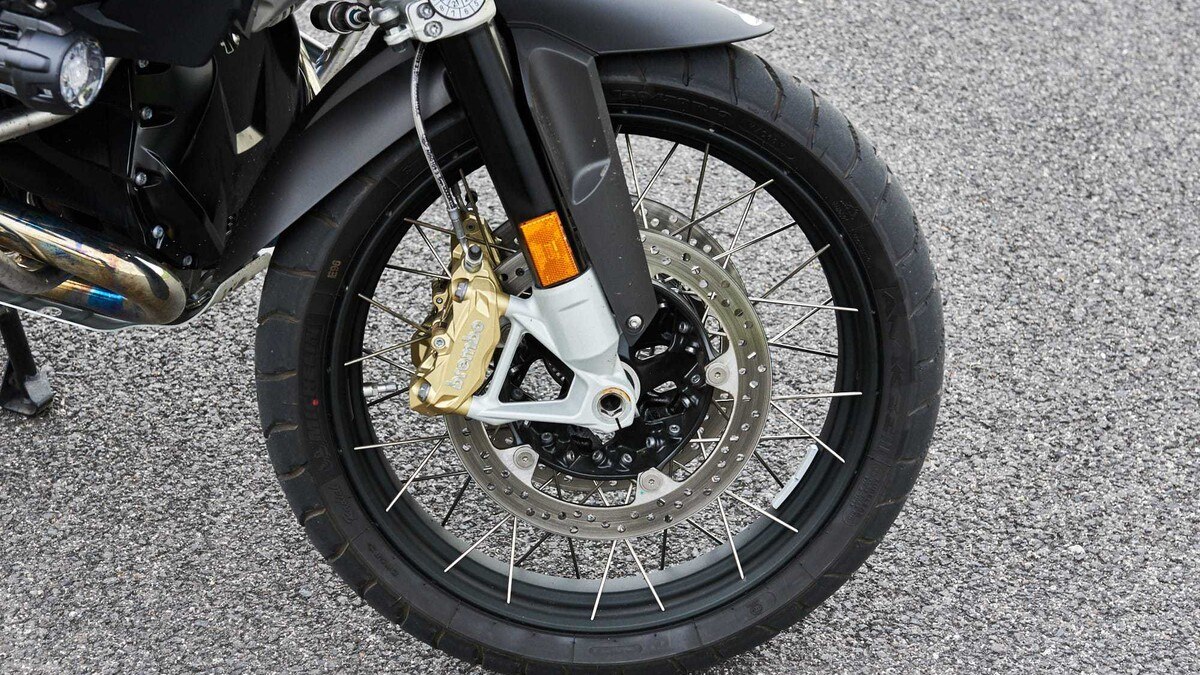Test BMW R 1200 GS Adventure Rallye - Great cow!
Finally, after much begging and pleading, BMW Austria heard me and made the R 1200 GS Adventure Rallye available to me. Although I'm not actually a GS fan, the fat cow made a lasting impression on me. Above all, iron is a power in its entirety. What follows (unfortunately) is a song of praise.
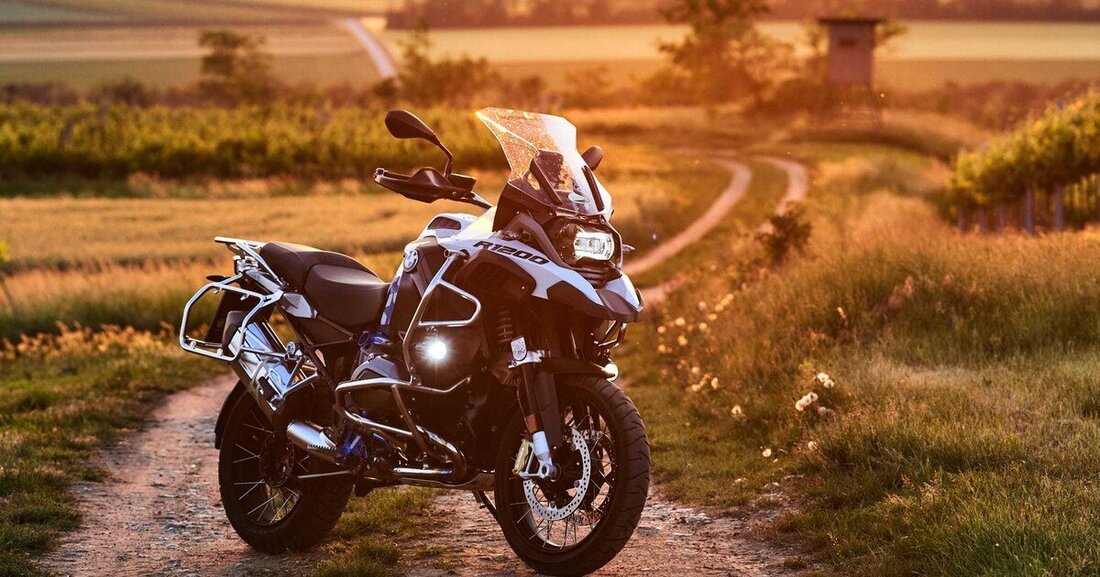
Test BMW R 1200 GS Adventure Rallye - Great cow!
ergonomics
Well, there's the fat cow standing in front of me: white, blue, silver, a bit black, wire-spoke rims, powerful crash bars all around, fog lights. The one-off, everything package for high earners with an affinity for two-wheelers. Swing into the saddle, look, you're sitting high up here. With the rally seat, the seat height is a generous 895 mm. You don't sit, you sit enthroned. Not for short-legged bikers. But the bench is almost ideally shaped: nice and narrow around the crotch, pleasantly wide at the bottom and well padded. Small drawback, the approx. 1.5 centimeter thick gap between the seat and the tank. Reach for the high, wide handlebars. Fits perfectly. The windshield can be infinitely adjusted using the rotary wheel. Basically even while driving, as long as the wind pressure is not too strong. With my height of 1.85 meters, I have never had unpleasant air turbulences in the helmet area at any lens setting. The wind protection was correspondingly good. Look at the huge, colorful TFT display. Cool thing. The fully digital instrument panel is operated via the left handlebar control: up and down is switched using a rocker switch. Right and left using the rotary wheel next to it. I don't understand why you don't do everything on the bike. But well, maybe the extra features are reserved for the navigation system (not integrated). No matter, it sits comfortably, the knee fit fits, the overview (including the mirrors) is very good. But the kicker is the extremely long impact. According to the factory information, the test motorcycle weighs 263 kilograms. Thanks to the large impact, however, you can feel like you can turn the GS while standing, as long as you can still get to the ground with your ten tips. Nice gimmick: If you drive off-road, a raised part of the foot brake lever can be folded down so that you can operate the rear brake perfectly even when driving at a standstill. Very clever.
Handling
Applause, applause, the GS certainly doesn't drive like a 260 kilogram bomber. On the contrary, once in motion, it can be easily shifted from one side to the other with minimal steering input. Even at top speed, a little push on the handlebars is enough and the Adventure settles into the curve. Great cinema. And the handlebars don't twitch a millimeter, even at high speed. Surfing through the radius is completely stable, whether at 10 or 200 km/h. What's noticeable: Even at walking speed, the GS isn't tippy in the slightest, but sits firmly on the road. So full that after a very short time I had extremely high confidence in their agility, despite their expansive size. You are still somewhat limited when meandering through the city. The high seating position and the width due to the boxer engine impose certain limits. The GS can do city driving with almost no restrictions, but its home is the country and mountain roads of the world. Because there the cow destroys all prejudices that could be said against the Bavarian almost all-rounder. She weaseles around corners with ease. Nevertheless, always stable and more neutral than any Swiss. Such a thick device can be surfed through the curves so easily? Yep. And it's even a lot of fun. Occasionally the footrest scratches on the ground. Then you are already very motivated and no longer need to fear the bent knee slider on your neck on your yoghurt cup. Quite the opposite: While on a normal motorcycle you push with a lot of physical effort and courage, in the GS saddle you still sit upright and stoically let the fat cow go at its speed. It's that easy to do quickly. And so comfortable and calm. Unfortunately, it's really a great cinema. Well, when you reverse while stationary you notice the weight on her, especially if you take your foot off the rest a little late when braking to a standstill and park the cow at a slight angle. But honestly: there is absolutely nothing wrong with the handling.
Engine/transmission
Well, the air cooling is over, the 1170 cubic boxer engine is now cooled with water. The hardcore fans had tears in their eyes at the introduction. Completely unnecessary. Because the water-cooled Boxer is better than ever. With a whopping 125 Newton meters at 6500 rpm and also 125 HP (at 7750 rpm), the cow is very good at feeding. I even think it feels like it has a bit more power, despite the heavy weight. This is mainly due to the powerful boom that can be heard shortly after idling. One turn of the short and direct throttle handle and the cow makes a big moo! Because now comes my personal favorite feature of the GS: the quickshifter. Simply open the tap fully, drive the cow brutally forward and just before the red speed range, a quick tap with the tip of your left toe, push the gear lever up without the clutch and, amazed - the next gear is in. Once again full pipe – amazed!, amazed! Yes, that's how to tear through in 2018. Very, very casual. The exhaust sometimes spits like its super sports sister, the S 1000 RR. Splendid. Guaranteed grin under the helmet. And always forward. Despite the over 260 kilograms. Powerful. But: The quickshifter lets you downshift without a clutch - i.e. with the blipper function - also without clutching. The load even double-declutches automatically. Wonderful – but only almost. Because when you downshift there is a jolt through the chassis and gearbox, which is something you don't want to do for a long time and especially not at low speeds. Don't get me wrong, it works. But an experienced rider downshifts more smoothly. Advantage: Even if you are extremely late at the corner in the rain, the rear wheel does not lock and the cow does not wedge its rear. I tried it – stoic calm on the hindquarters. Very trustworthy. The gearbox itself can otherwise be shifted rather inconspicuously. Neither noticeably buttery soft nor shaky. And the sound? Despite the generous rear silencer, it is remarkably muffled. Not quite as dull as Italian aftermarket dampers, which makes you wonder how they even got approval. But for a series exhaust with Euro4 emissions standards, the cow's saying isn't bad at all. It should be mentioned again here: I am generally not a GS fan! For the sake of form: The GS offers four different riding modes: Road, Dynamic, Rain and Enduro. The modes differ in terms of ABS intervention, traction control, throttle response and power delivery.
Undercarriage
The test model was equipped with the Dynamic ESA, the electronic suspension from BMW Motorrad, which is subject to a surcharge. Accordingly, the system worked fine. The chassis adapts automatically to the rider and his riding style. If you cruise through the area in a relaxed manner, bumps are absorbed very comfortably and smoothly. If you suddenly turn the throttle with more motivation, the damping reacts quickly and becomes tighter and more direct. In other words: the chassis masters the balancing act between comfortable and sporty at any time and imperceptibly. But that's not entirely true, because if you like conventional, non-electronic chassis a little firmer, then you'll need a few kilometers to adjust to the moving front. Because there is always some movement in the chassis of the GS. The springs are compressed and extended as necessary. That's by no means a bad thing, because ultimately that's exactly what a chassis is supposed to do, namely compensate for unevenness and thus relieve the tires of work. The Telelever front suspension in particular requires some getting used to. Although this design should actually prevent the front wheel from collapsing when braking or not make it so noticeable, all it takes is an abrupt turn on the accelerator and the front nods. The preload on the rear spring strut can be adjusted via the menu, but in principle it also adjusts independently. The ESA chassis has various modes available that you can select personally, regardless of which riding mode you are in. However, the Dynamic ESA system is linked to the other systems in order to adapt even better to the respective driving situation. I'm abbreviating here because I'm sure that the topic of electronic cow chassis alone would fill a dissertation: The chassis works really well. It's always in motion and non-GS riders will need a period of getting used to it to build up the necessary feeling and confidence, but the GS is manageable and stable in every situation.
Brakes
The only point where I can make some criticism. No, the GS's brakes aren't bad. But when you brake you notice that over 260 kilograms are pushing. The front brake is obviously designed for enduro use, as the pads are quite tame in the first bite. Only when you increase the pressure on the lever and the pads and brakes build up more temperature does the bite become sportier and more direct. This is wonderful off-road, but when you're motivated to take turns, the first bite could be more courageous. The dosability is right for this. The rear wheel brake, on the other hand, is flawless, it can be adjusted perfectly and showed a very good braking effect in the test. In inner cities I worked almost exclusively with the engine and rear wheel brakes - that's how well I got along with them. Yes, the ABS kicks in, but as is often the case with motorcycles of this quality: for me, never too early, but when I would expect it. Enough so that you don't have to fear any opponents on the home route. Except maybe semi-professional supermoto cracks who pull a five meter braking drift with the front wheel at the entrance to a corner. Okay, the cow can't go with that. But she doesn't have to.
Noticed
The good overview of the rearview mirrors. The really pretty TFT display with high resolution. How well the engine runs. How practical cruise control can be. How stable and manageable the fat cow can be. How easy it is to quickly whiz through curves. How much fun driving a BMW GS can be. And how expensive this fun is today: 26,872 euros.
Failed
Actually just the price. Of course, the BMW R 1200 GS Adventure can really do everything you can ask of it. And so good too. But hello, it's still a motorcycle. At the price of a mid-range car. That's pretty intense.
Test verdict: BMW R 1200 GS Adventure, by p.bednar
More information about BMW R 1200 GS Adventure
With kind support from TOTAL Austria
More action photos from the test drives can be found on Instagram: apex_moto_at
Or follow us on Facebook: Apex Moto

 Suche
Suche
 Mein Konto
Mein Konto
